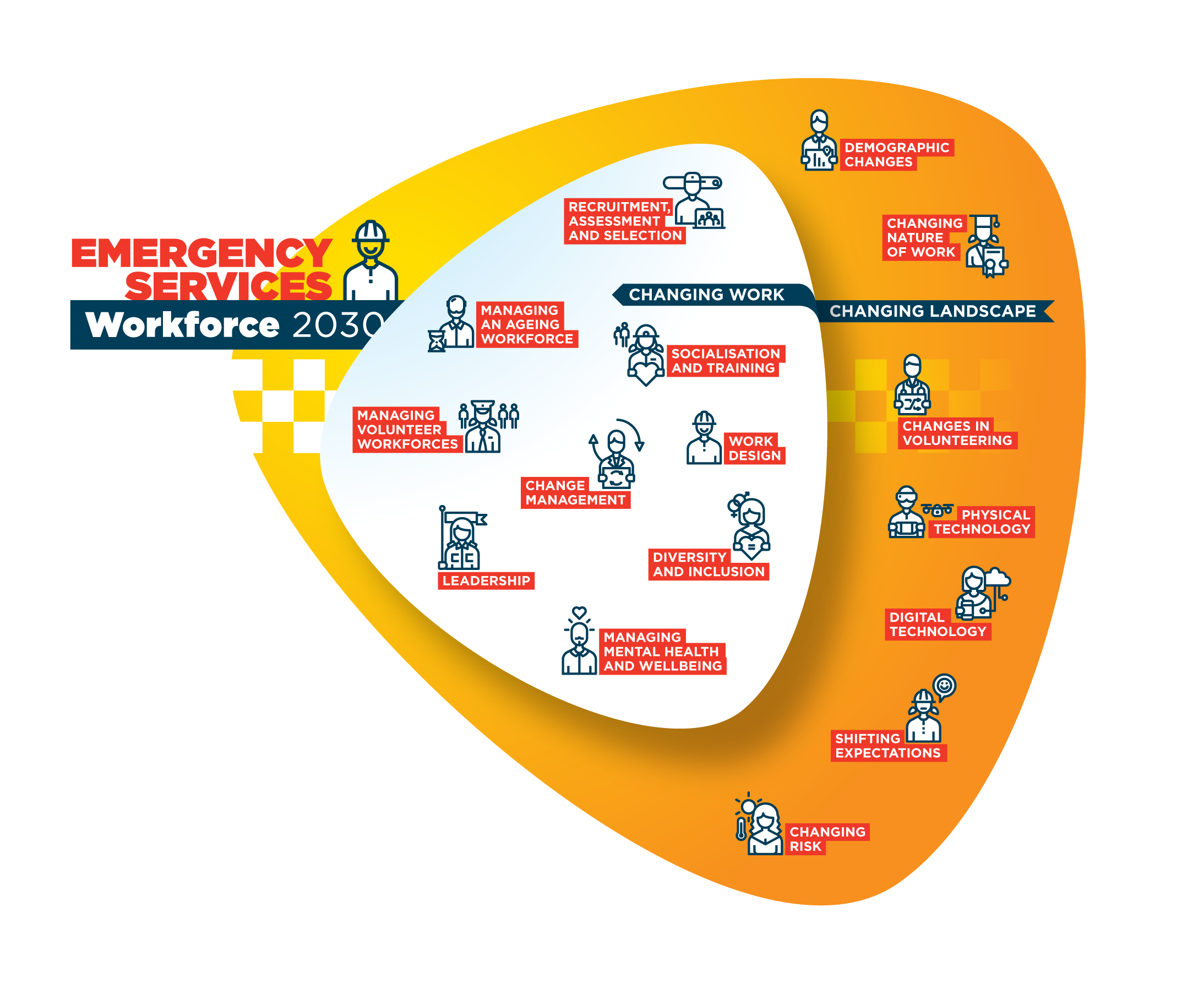
Australia is undergoing major and rapid changes that will affect how people work and volunteer with the emergency services in the future. So, what are the major emergency management trends and what can be done to prepare emergency service workforces for the year 2030?
The Bushfire and Natural Hazards CRC’s Workforce 2030 Research Advisory Forum, held in 2019, highlighted that the risk profile of the nation is changing, driven by a range of environmental, social and economic factors. In response, the Enabling sustainable emergency volunteering project team collaborated further on Workforce 2030, specifically to build up an overview picture of emergency workforce challenges and opportunities likely to face emergency service organisations over the coming decade.
The research undertaken for Workforce 2030 contextualises and adds to existing research within the emergency management sector. Importantly, it outlines how wider trends and developments from outside emergency management that will play a major role in shaping the emergency services workforce over the coming decade, as well as potential implications.

Dr Blythe McLennan, lead author of the research and Node Research Manager at Natural Hazards Research Australia, explains that Workforce 2030 provides a foundation for organisation-wide conversations about supporting a future-ready workforce.
“The Workforce 2030 report asks us to look up and ahead from where we are today, to think about and start planning for what we want – and need – the emergency service workforce to look like in another 10 to 20 years’ time. It presents evidence and arguments for the current and future relevance of existing and emerging programs and services.”
The project was conducted in partnership with the Future of Work Institute at Curtin University and RMIT University, and was supported by the AFAC Workforce Management Group. It brought together several CRC workforce-related research projects (on volunteering, diversity, catastrophic events and decision-making) as well as research from outside the CRC community. It was a first step in bringing together the wide range of research that can inform and strengthen strategic workforce planning in emergency service organisations.
What are the key outcomes?
The outcomes of this project are now available and are inspiring action in the emergency sector by revealing the emerging challenges and opportunities over the coming decade.
Years of research are summarised in the following industry-focused resources:
- a lead report: Emergency Services Workforce 2030 provides a consolidated overview of emerging workforce challenges and opportunities likely to affect emergency service organisations over the coming decade.
- two literature reviews:
- Changing landscape literature review considers trends across external environmental themes.
- Changing work literature review focuses on nine themes that are relevant to emergency service organisations’ internal workforce management environments.
- a Workforce 2030 video to help explain the key sector trends
- four animations that describe hypothetical workforce scenarios in 2030 to challenge us to think outside the boundaries of current ways of working:
What are the emerging challenges and opportunities?
Highlighted in the lead report are 11 key messages about the future of work in the emergency services, comprising five system-level and six organisational-level implications. These implications contain both challenges and significant opportunities to rethink ways of working, and ways of supporting workers and workforces in the emergency services into the future.
System-level implications:
- A strong, shared vision for the future of emergency management will provide greater direction to strategic workforce planning.
- Service delivery models are likely to be redesigned and increasingly tailored to fit diverse community and regional contexts.
- The need to confront wider implications of climate change beyond natural hazard impacts will grow.
- Developing the workforce of the future means looking to build and attract skills, traits and capabilities in key emerging areas.
- Nurturing transformational, adaptive and inclusive leadership styles and skills will be important for supporting workers through change.
Organisation-level implications:
- Successfully responding to change means investing in building organisational resilience.
- Positive work design can enable workers to flourish and support positive mental health and wellbeing.
- Balance positive and negative impacts of professionalisation and managerialism on volunteers.
- Adapt technology to workers.
- Understanding and managing public expectations and brand is increasing in importance for emergency service organisations.
- A diversifying workforce means diversifying workforce management within inclusive organisational cultures.
Who can use this research?
The workforces of Australia’s fire, emergency services and rural land management agencies are crucial to Australia’s emergency management capability. These workforces include career and volunteer members, first responders and technical and administrative support staff. Anyone involved in workforce planning can use this research to inform their strategies.
This research can also help planners in other emergency response services, such as ambulance, surf lifesaving and marine rescue, as well as a range of other organisations that coordinate and support the wider emergency management workforce.
For more information about this research, contact Dr Blythe McLennan at Natural Hazards Research Australia: blythe.mclennan@naturalhazards.com.au.
